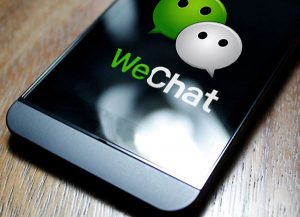Wechat is the dominant social media platform in China, perhaps the new medium, the new app for the world.
What is Wechat
Simply, it is a social media app developed by Tencent that is described in Western standards as Whatsapp meets Facebook, meets PayPal, and so much more. It began as mobile only (requiring users in the early days to adopt smart phones) and now has expanded to a desktop light version. For more on wechat functionality:
http://a16z.com/2015/08/06/wechat-china-mobile-first/
So Wechat is not just a messaging app, but adds “moments” (similar to Facebook’s Newsfeed) and a powerful payment service that connects to most of your Chinese bank accounts. You can set up your own corporate account that enables you to market as well. Where payment is concerned you can easily transfer money to friends, use it to pay for taxis, flights, and many other services; one can also use its payment functionalities for eCommerce platforms. Most Chinese end users are now accustomed to using it and this has driven many western companies to accept the form of payment to attract more Chinese consumers, such as the case of Adyen below:
https://www.finextra.com/pressarticle/67045/adyen-to-support-wechat-payments
In terms of eCommerce:
- Companies can have official accounts to market their products > companies can then drive traffic by digital campaigns/followers/wechat-marketing, to a channel of their choice: offline stores, standalone eCommerce, Tmall, JD, etc
- Companies can create Wechat stores. However, at this stage these stores are fairly limited in functionality and style.
- Therefore, digital campaign traffic is usually pushed to the Alibaba type platforms (Tmall, Taobao, Jing Dong, etc), and the standalone eCommerce store.
Problems with Tmall and Alibaba online stores?
- Limited access of end user data, since it is all controlled and kept by Tmall and JD
- High commissions charged by the platform
- Counterfeit goods still distributed on these platforms, lowering the value of the brand
- High cost of marketing your product on a very competitive platform > Tmall and JD is basically an online shopping mall, that has 100s of floors and your product may be only at the basement, undiscovered with little chance of being sold
The brand Coach has had these problems and in response has shut down their Tmall store. They now intend on focusing efforts in Wechat marketing and driving traffic to their standalone eCommerce store.
A report by Business Insider discusses Coach’s move in more detail
Sticking to your Standalone Store and Wechat Strategy
- The Standalone Store must be fully integrated with wechat
- This includes entrance to the store via wechat login.
- Wechat payment integrated into the store.
- Responsive design to make the site mobile/wechat friendly
- An example of this strategy would be Company A setting up a digital campaign on wechat > The Digital Campaign engages the end user in the wechat app and the end user is directed to a point of action at a url, connecting to the standalone eCommerce store for Company A. The user then clicks on the link which opens up the tencent browser. If the standalone eCommerce store is fully integrated with wechat, then the experience should be seamless.
- eCommerce Agency TLG discusses its own wechat integration below:
https://trilogi.com/en/blog/open-wechat-store-with-tlg-commerce-integrated- wechat-payment/
- Wechat login allows immediate access to the eCommerce site without putting in tedious contact details and signing up.
- Checking out/payment with your standalone eCommerce store (using the wechat app/browser) is impossible without wechat payment integration. Typically you can browse products, put them in the basket but when you proceed to check out, Alipay is the only option, which is blocked on wechat. (Alibaba/Alipay and Tencent/Wechatpay are competitors). Hence, wechat payment must be integrated to solve the payment problem.
In Conclusion
- As individuals we should make full use of wechat – it is a one-stop-shop app that I can’t emphasize enough as not only extremely useful, but paving the way to the future.
- From a business perspective, understanding wechat’s social network, and full functionality is crucial to success in the China market
- Drive traffic through wechat to all your relevant online/offline channels
- Analyze which channels are the best to convert sales and adapt to changes in the market > Example, Coach leaves Tmall citing dissatisfaction, should you only rely on Alibaba platforms?
- Fully localize your standalone eCommerce software with full wechat integration
- In fact, localize all software to fit China’s tech environment
- Always be building your “guanxi” or network!
Contact us to know more about eCommerce in China



